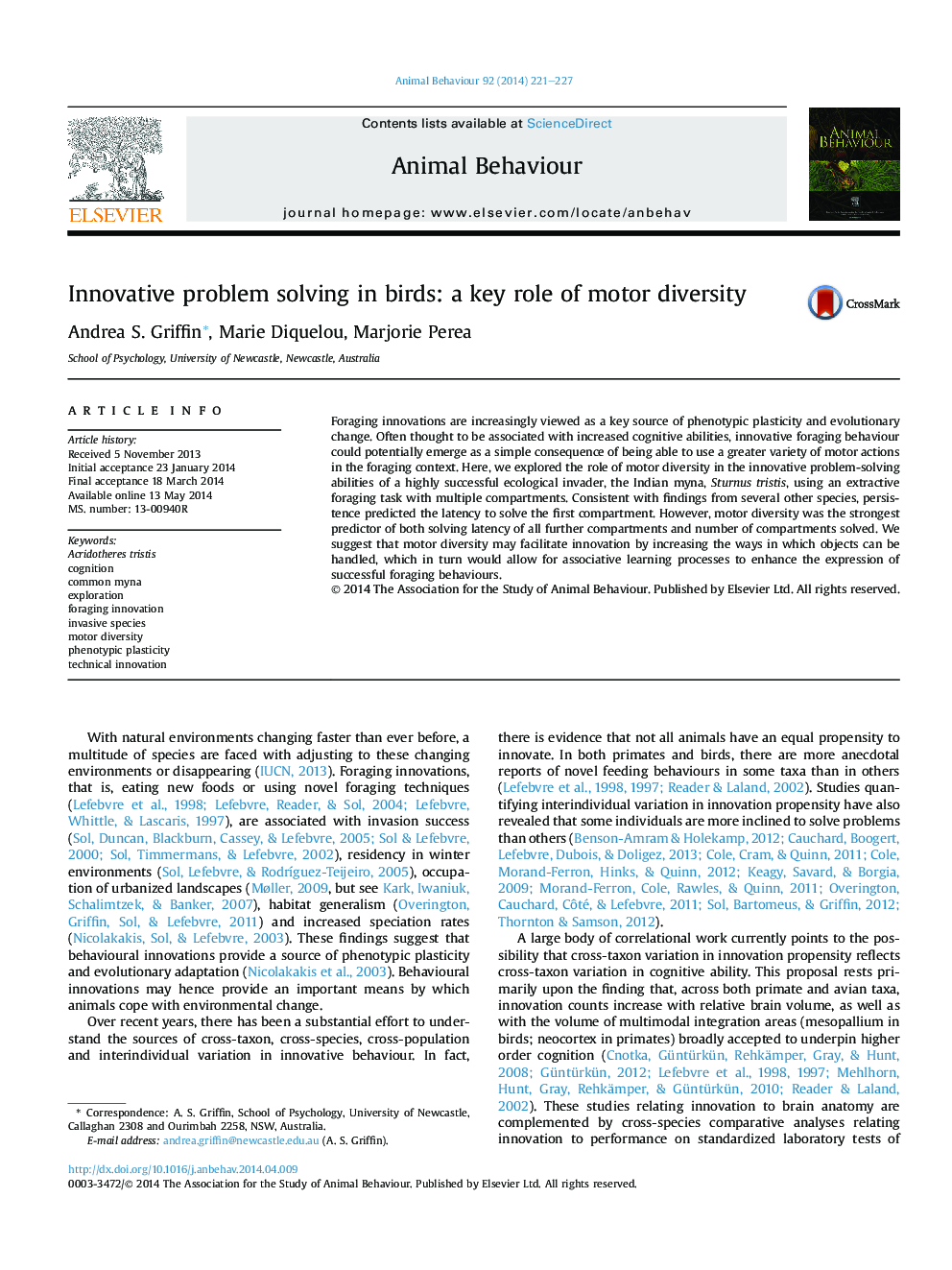| Article ID | Journal | Published Year | Pages | File Type |
|---|---|---|---|---|
| 8490570 | Animal Behaviour | 2014 | 7 Pages |
Abstract
Foraging innovations are increasingly viewed as a key source of phenotypic plasticity and evolutionary change. Often thought to be associated with increased cognitive abilities, innovative foraging behaviour could potentially emerge as a simple consequence of being able to use a greater variety of motor actions in the foraging context. Here, we explored the role of motor diversity in the innovative problem-solving abilities of a highly successful ecological invader, the Indian myna, Sturnus tristis, using an extractive foraging task with multiple compartments. Consistent with findings from several other species, persistence predicted the latency to solve the first compartment. However, motor diversity was the strongest predictor of both solving latency of all further compartments and number of compartments solved. We suggest that motor diversity may facilitate innovation by increasing the ways in which objects can be handled, which in turn would allow for associative learning processes to enhance the expression of successful foraging behaviours.
Keywords
Related Topics
Life Sciences
Agricultural and Biological Sciences
Animal Science and Zoology
Authors
Andrea S. Griffin, Marie Diquelou, Marjorie Perea,
